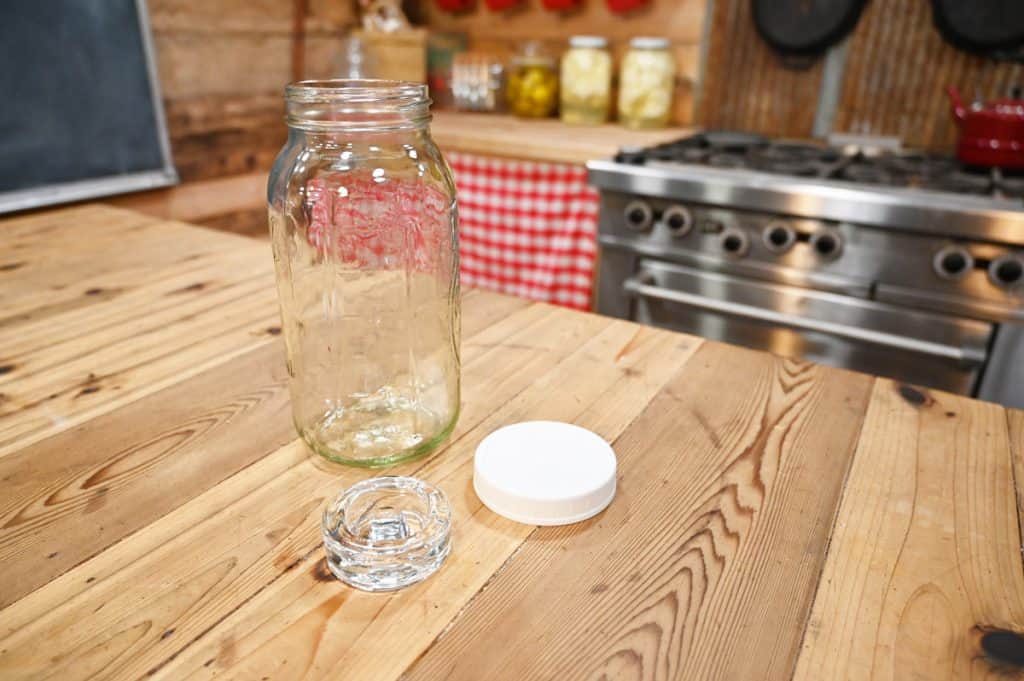


Fermenting vessels come in all different shapes, sizes, and varieties. So which one is best? And what do you need to think about when choosing the best fermenting vessel? We’re covering the most popular fermenting vessels and what you should look for.

Why I Love Fermenting
Fermenting is really making a comeback as a preservation method and that makes me very excited! It’s actually the only preservation method that makes your food healthier and more nutrient-dense. (Source)
It’s important to note that I am not a certified medical practitioner. This post is not intended to diagnose or treat but is for informational purposes only. Please contact your healthcare professional before introducing new herbal and natural remedies into your wellness routine.
I think everyone should start fermenting if they haven’t already. I am so passionate about it that I have shared the basics of fermentation, go more in depth to discuss fermentation for long term storage, and have even created an entire course called Fearless Fermentation. The course dives deep into fermentation, how to get started, and how to create delicious fermented foods your family will love.
For many years fermenting has been about the fancy condiments that you keep in the refrigerator for specific meals. But lately, many are realizing the health benefits of consuming fermented foods every single day.
Some of our favorite recipes to eat daily are ginger carrots, homemade sauerkraut, easy pickled garlic, and these “pizza beans” or fermented green beans.

Fermenting Vessels
There are a lot of different options when it comes to fermenting, and don’t be daunted by all the different fermenting supplies you might need, a simple mason jar can work!
Mason Jar
A plain old Mason jar can do the trick when it comes to fermentation. Make sure you’re generally working with a wide-mouth jar (I like to use these half-gallon-sized jars). This is important because you want to be able to get things in and out with ease, so a narrow-mouth jar can be difficult.
One thing that helps when using a mason jar is to use a glass fermentation weight. What this does is it sits on top of your fermenting foods and keeps that food underneath the fermentation liquid.
You can also use an airlock lid specifically designed for a mason jar. These aren’t necessary, but they can come in handy, especially if you’re tried fermenting in the past and have experienced mold or undesirable results.

Crocks
Historically, we have seen a lot of fermentation crocks. A crock is just a nicely glazed piece of pottery. It’s important that there are no cracks on the inside of the crock or the glaze. You can find a crock similar to the one above here.
When it comes to older crocks, many of the materials used to make the crocks weren’t food-safe. The glaze was food-safe, but the actual crock material wasn’t. This is why it’s often a safer bet to go with newer crocks that are made with food-safe materials.
It’s normal for very fine cracks to form inside the crock, and these are fine as long as your liquid isn’t seeping through that glaze.
You can also purchase stone weights that fit inside your crock and these are very helpful for eliminating the possibility of mold due to food that works its way above the brine.

Wooden Barrel
A wooden barrel is another historical method for fermenting. I love using these wooden barrels for fermenting because many of the wooden barrels are toasted on the inside which adds phenomenal flavor to your ferment.
The downside of this is that the barrels are a little bit difficult to take care of. They have a tendency to shrink, which means you have to soak them in water to swell them.
If they have any period of inactivity or if they get any mold in them you will have to sterilize them. Sterilizing a wooden vessel is difficult and generally means you need to use a chemical component like a Campden Tablet.
This will ensure you’ll start your ferment off on the right foot with a clean sterile environment.

Airlock Jars
My new favorite method for fermentation is to use a water-lock glass container. The shape of the bowl is fantastic for being able to fit a lot of food into the jar, but the shape of the neck means it’s hard for the food to sneak up above the surface.
The lid also has an airlock system that means no oxygen can make its way into the jar.
Fermenting Vessel Tips
- Always be sure your fermentation vessels have no lead involved in making the product.
- Make sure you can sterilize your vessel (boiling in water for 20 minutes is the easiest!) and always start with a sterilized container.
- Ensure all food stays below the fermenting liquid throughout the entire fermentation process.
- Anytime you dip into your ferments, be sure you’re using a very clean utensil.

Other Fermenting Posts You May Enjoy
I hope this post has clarified which vessels can be used for fermenting. If you have any other questions, be sure to check out some of our other resources below.


















